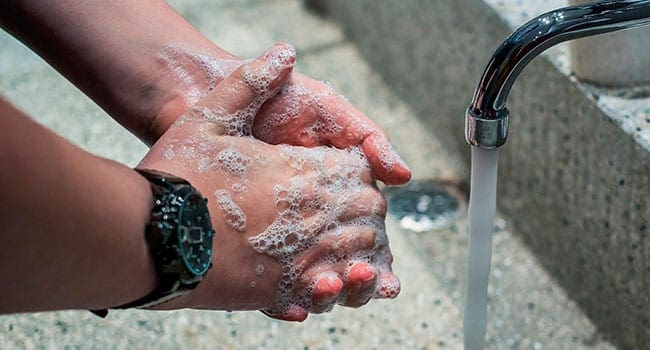 Modern medicine has at its disposal a vast array of technologies that can be used to identify, track and predict the risk and potential impact of emerging infectious diseases.
Modern medicine has at its disposal a vast array of technologies that can be used to identify, track and predict the risk and potential impact of emerging infectious diseases.
Bioassays, genome sequencing and molecular technology can identify a novel pathogen. Computer modelling (in real-time) can provide us with an instant status report showing how much it has – and can – spread. Infrared thermometers give us accurate temperature readings without the need for human touch. And, ironically, computers analyze our human behaviour to determine and predict risks.
All of this is expensive, state-of-the-art technology. Yet it was still not enough to stop a lowly virus from travelling the world, inflicting mass chaos and disruption on economies and social patterns. It even overwhelmed the medical systems that were supposed to be prepared for a scenario just like this.
COVID-19 is not a sophisticated enemy. It consists of a single strand of RNA enveloped in a protein wall, and it is this RNA strip that allows it to replicate itself and infect other cells. The RNA sequence is unusually long and this makes it more likely that the RNA will make mistakes as it duplicates itself. As a result, coronaviruses like COVID-19 are prone to mutations – genetic errors that make it more likely to survive, and more problematic to eradicate.
So it’s truly humbling for a world that’s reliant on technical wizardry to realize that it has been utterly foiled by a blob of protein that isn’t even competent enough to successfully replicate itself.
The high-tech humiliation continues as we learn that the very best defence we have to combat this bumbling virus is soap, water and the constant admonition to wash our hands.
That age-old motherly message to “wash your hands” amounts to the same science we’re counting on to end this worldwide pandemic, and the best virus-fighting technologies that we have right now are sinks and soap dispensers.
Handwashing is one of the most basic skills we learn as children, but simplicity does not necessarily mean compliance and getting people (and entire cultures) to change their long-held habits takes time.
In the early 2000s, hospitals and other care centres first witnessed the arrival of the superbug – a drug-resistant pathogen that creates havoc in a confined environment (like hospitals, care homes and cruise ships). Outbreaks of C.difficile in Quebec hospitals resulted in almost 3,000 deaths from 2000 to 2003. After that, handwashing and environmental cleaning became a top priority for healthcare centres.
The Canadian Medical Association Journal has reported some success as C.difficile infections in acute care hospitals across Canada dropped by 27 percent from 2009 to 2015.
Despite this, hospitals remain notorious for spreading infections and the most recent data shows that one of every nine Canadian hospital patients will develop an HAI (hospital-acquired infection) during their stay.
That translates into approximately 220,000 infected patients and 8,000 patient deaths per year in hospitals across Canada. Most of these are considered to be preventable and handwashing is known to be the most effective measure to avoid transmission.
A decade ago, the World Health Organization claimed that healthcare workers washed their hands on less than half of the occasions that it was required. A long and persistent campaign to change this has made significant progress, as a recent report by the BC Infection Control Network found that, from 2014 to 2019, nurses washed their hands an average of 84 percent of times when it would be expected. Statistics for clinical support workers and other staff were similar, but compliance rates for physicians ranged from 70 to 75 percent.
This isn’t to say that doctors and nurses are running around with dirt under their fingernails. In fact, one U.S. study found that nurses and non-clinical personnel applied hand sanitizer an average of 9.1 times an hour and washed their hands 2.1 times per hour.
The problem is that all of this takes time – the one resource that healthcare workers rarely have.
It also requires ready access to sinks, sanitizer and rooms/wards that are physically designed to minimize contact and maximize sanitation.
The other issue is patients. A 2014 McMaster University study found that hospital patients were extremely careless and only washed their hands about 30 percent of the time in the bathroom, 40 percent before meals and three percent while preparing food in common kitchenettes.
Those numbers don’t bode well for what’s happening outside of hospitals with every other member of our society.
Campaigns to encourage handwashing are a simple solution and probably should have been a priority long ago. But changing a culture requires more than catchy advertising slogans – it also means physical resources. We need better access to sinks, soap, water and hand sanitizer … everywhere.
It’s not the high-tech solution that most people are looking for, but it’s one of the first things we need to do.
Susan Martinuk is a research associate with the Frontier Centre for Public Policy.
The views, opinions and positions expressed by columnists and contributors are the author’s alone. They do not inherently or expressly reflect the views, opinions and/or positions of our publication.


